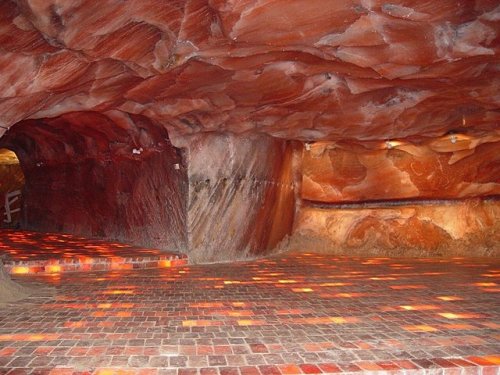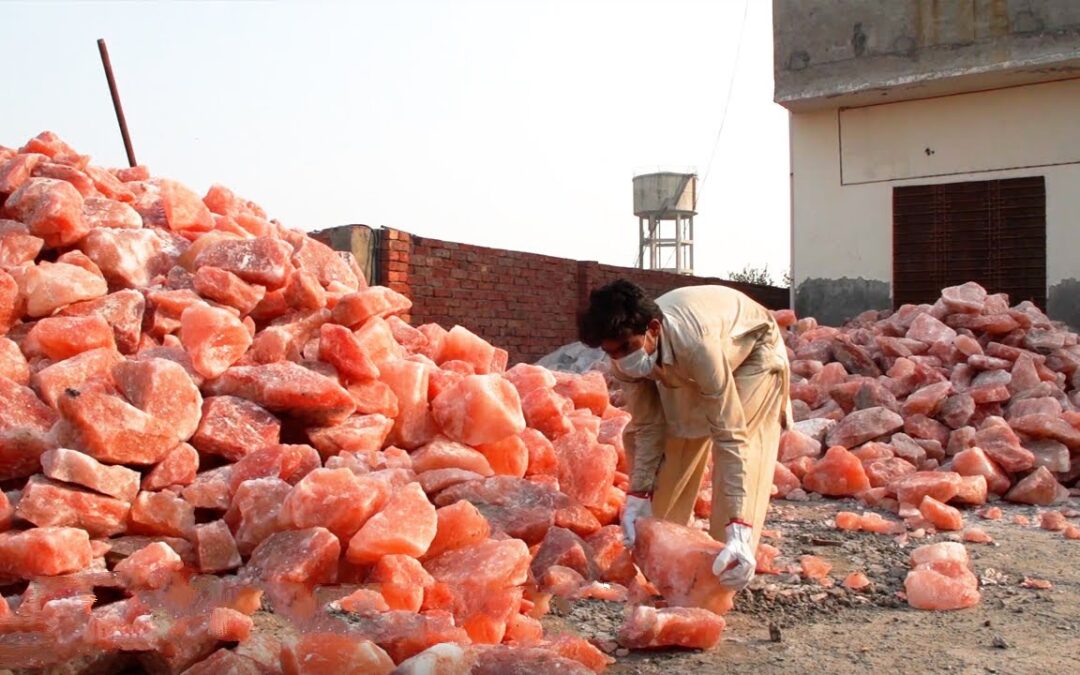Himalayan salt, often hailed for its purported health benefits and aesthetic appeal, is harvested from the Punjab region of Pakistan, near the foothills of the Himalayas.
Its pink hue, attributed to its rich mineral content have made it a popular alternative to regular table salt. However, as its popularity has surged, so have concerns about the environmental sustainability of its extraction and processing. This article delves into the environmental impact of Himalayan salt harvesting, distinguishing between fact and fiction.
The Harvesting Process
Himalayan salt is mined from the Khewra Salt Mine, the second-largest salt mine in the world. Traditional mining techniques have been employed for centuries, but with modern demands, these practices have evolved. The mining process involves extracting large blocks of salt from the earth, which are then processed and refined into the products that eventually make their way to consumers. While this process might seem straightforward, its environmental implications are multifaceted.
Energy Consumption and Emissions
One of the primary environmental concerns associated with Himalayan salt harvesting is the energy required for mining, processing, and transportation.
Mining operations require significant energy, primarily sourced from fossil fuels, leading to greenhouse gas emissions. Processing and refining salt further contribute to the carbon footprint, as does transporting the final product worldwide.
Land Degradation
Mining activities, by their nature, alter the landscape and can lead to land degradation. The extraction of salt can cause soil erosion and decrease land stability, potentially affecting local ecosystems. However, compared to other types of mining, salt mining is often seen as less destructive, particularly because it does not involve harmful chemicals in the extraction process.
Water Usage and Pollution
Water is used in the processing of Himalayan salt, particularly in washing the salt to remove impurities. While this step is crucial for ensuring the purity of the salt, it raises concerns about water consumption and the potential for pollution. The wastewater from the salt washing process can carry salt and mineral residues into local water bodies, affecting water quality and aquatic life.
Conservation and Sustainable Practices

Interior view of the Khewra Salt MineIn response to these environmental concerns, efforts are being made to implement more sustainable practices in the harvesting and processing of Himalayan salt. These include:
- Energy Efficiency: Adoption of more energy-efficient mining and processing technologies to reduce greenhouse gas emissions.
- Land Rehabilitation: Initiatives to rehabilitate mined land, promoting ecosystem restoration and preventing erosion.
- Water Management: Improved water management techniques to reduce consumption and prevent pollution, including recycling and treating water used in processing.
Myths vs. Facts
Myth: Himalayan Salt is “Eco-Friendly”
The term “eco-friendly” suggests that a product has no negative impact on the environment, which is not entirely accurate for Himalayan salt. While it is true that salt mining is less harmful than some other types of mining, it still has environmental impacts that need to be managed.
Fact: Efforts Are Being Made Towards Sustainability
It is accurate to say that efforts are underway to make Himalayan salt harvesting more sustainable. These efforts demonstrate a commitment to reducing environmental impacts and ensuring that this ancient resource can be enjoyed by future generations.
Myth: Himalayan Salt Harvesting Depletes Natural Resources
While any form of mining extracts resources from the earth, the Khewra Salt Mine is vast, and current extraction rates are not considered to be depleting the resource at an unsustainable rate. Proper management and conservation practices are crucial to maintaining this balance.
Conclusion
Himalayan salt harvesting, like any form of resource extraction, comes with environmental challenges. However, distinguishing between the facts and myths surrounding its environmental impact is crucial for consumers aiming to make informed choices.
While it is not without its footprint, efforts toward sustainability and conservation are helping to mitigate these impacts. As awareness grows and technology advances, the hope is that Himalayan salt can continue to be harvested in a way that respects both its cultural heritage and the environment from which it comes.
We hope you found the information above useful. Leave a comment below, or contact us if you have any questions.
